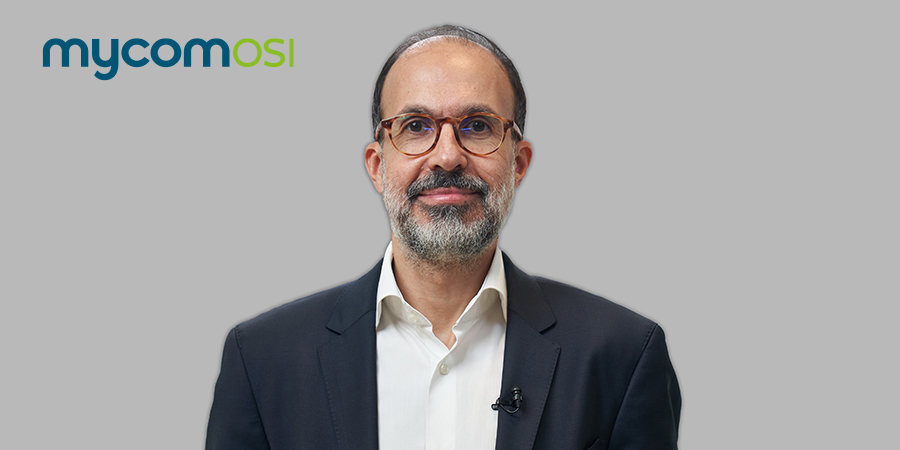By Mounir Ladki, President and CTO, MYCOM OSI
With artificial intelligence (AI) influencing all industries, communications service providers (CSPs) have identified the adoption of AI as a key enabler for automating their operations, creating differentiated digital experiences, and keeping their networks at peak performance. According to a recent Gartner study, 59% of CSPs emphasized the significance of AI/ML for enhancing the observability of operations and networks’, highlighting them as a very important use case. 39% of those CSPs are currently deploying this use case and 23% will deploy it within the next 2 years.
By managing performance through accurate predictions, and proactive actions on impending problems, CSPs can completely wipe out the possibility of errors and failures in their networks. Our recent experience with CSPs shows that AI not only produces predictive business impacting analytics, but also allows severe anomalies and faults to be detected well ahead of time. These AI-based solutions, prevent network problems by acting in advance of the impact, and proactively remediating the problem.
Unlocking the potential of network and service data through AI can also become a source of new revenue for CSPs. By predicting service behaviour, CSPs can restructure their costs. By anticipating capacity exhaust dates, preferences, and usage patterns, CSPs can proactively sell capacity and new services to their enterprise customers. Not to mention the massive potential of exposing historical and forecasted data through open APIs and monetizing it with application developers and other institutions.
Redefining Network Observability with AI
Adding the AI dimension to network and service observability begins with the mining of data from diverse sources to train and refine AI models. This is the most critical step where most AI projects fail. Efficiently collecting billions of disparate and heterogenous network data points and turning them into curated, normalized data sets to train ML models is crucial and mandatory for obtaining the right level of model accuracy. The specific nature and variability of telecom networks (geography, usage patterns, diverse functions, etc.) requires very specific AI/ML models that cannot be acquired off-the-shelf.
For example, for an average mid-size CSP, millions of ML models need to be trained to achieve the desired output. This requires massive compute efficiency, and a productized approach to model monitoring and lifecycle management. Once these highly accurate models are in place, network observability and assurance is then enriched with new game changing use cases. This includes performance predictions and anomaly detection; data pattern discovery and correlation; root cause analysis and automatic remediation. The first results have been spectacular— the mean time to identify/repair problems (MTTx) can be reduced by almost 90%, leading the way to autonomous operations.
The Role of GenAI in Network Observability and Business Operations
AWS’s study— Telecoms Generative AI Study— carried out by Altman Solon, identified generative AI as a distinct, significant, valuable addition to existing AI/ML for CSPs. It says that 70% of CSPs see the incremental value served by generative AI as distinct and significant. 64% of CSPs agree that many of the generative AI use cases being considered are new applications, not yet served by existing non-generative AI applications and processes.
GenAI opens a vast opportunity for new business applications and slicker operations for CSPs. Using diverse data from networks and business tools, GenAI can create hyper personalized services and on-demand experiences tailored to customers. Beyond business applications, GenAI will become a de facto co-pilot in the NOC (Network Operations Centre)— not just simplifying complex network queries but also offering simple-to-execute recommendations.
However, for GenAI to deliver high quality responses and accurate business insights, it needs to be heavily trained on diverse telecom-specific data. The next exciting phase of GenAI will be self-taught reasoning for network operations. The industry players need to join forces to develop a telecom specific LLM (Large Language Model), which will enable GenAI to act as the ‘brain’ of the autonomous networks of the future.
MYCOM OSI’s Application AInsights and Observed Outcomes
MYCOM OSI’s AI/ML-based Network Observability and Service Assurance offers key ingredients for successful outcomes:
- Extensive data platform covering a huge variety of network, service and business data.
- Highly specialized and exceptionally accurate models targeting advanced use cases.
- Inference and outcomes generated through our Network and Service Assurance Applications.
Through the above, MYCOM OSI has measured a 90% reduction in mean time to detect and repair network problems. We have also identified a 40% overall OpEx reduction in specific areas of the Service Operations Centre (SOC). In addition, a 70%+ reduction was observed for false positives and alarms that were not actionable in the network. This reduced operational overheads and significantly cut down OpEx. Finally, compared to in-house efforts by the CSPs in integrating AI and Service Assurance, a 75% reduction in development and deployment can be achieved through MYCOM OSI’s AInsights.
In conclusion, the benefits of integrating AI/ML and generative AI with network observability and
service assurance systems is immense. For CSPs and service assurance vendors, this is the right time to invest in AI technology, resources, education, and personnel to make the networks and services more robust, error free and less reactive.










